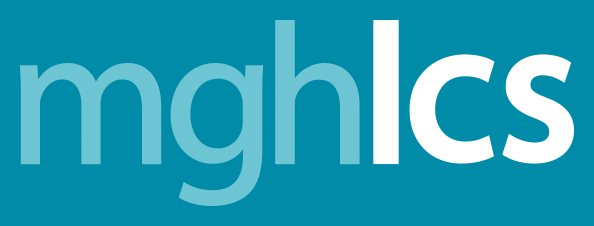Celebrating 50 Years of Innovation
The Laboratory of Computer Science is celebrating 50 years of innovation in biomedical informatics. As we look towards the next 50 years, we will highlight significant events in our history and explore how these milestones have shaped the modern health technology landscape.
Check back each week for updates!
Support The Next 50 Years
LCS is exploring new projects and research that can help shape the next 50 years of healthcare technology. We invite you to contribute to this journey by supporting the Century Innovation Fund.
1964: LCS is founded by Dr. G. Octo Barnett
In 1964, the year Dr. G. Octo Barnett was recruited to Massachusetts General Hospital and the Laboratory of Computer Science was formed, the idea of using computer-automated systems in hospitals was still something of science fiction.
It was two years into the Hospital Computer Project, a National Institutes of Health-founded collaboration between Mass General and the Cambridge-based company Bolt Beranek and Newman. BBN had developed a cutting-edge time-sharing technology for real-time, conversational, online data sharing. They recognized the value such a platform might hold in a hospital setting. However, with little physician or nursing involvement, the technology was yet to be widely adapted and the project was stalling.
By recommendation of NIH, Mass General recruited Dr. Octo Barnett to be the physician head of the project. At the time, Dr. Barnett had been working in cardiology research at Brigham Hospital, where he was becoming known for his work with computers – an interest he had picked up while rooming with several MIT scientists.
Dr. Barnett understood the needs and workflows of hospital staff and the possibilities and limitations of the technology. He spoke the language of both programmers and physicians and brought a valuable mix of skills that allowed the project to go forward.
“In our small group, there were no system analysts, no application programmers, no systems programmers,” Dr. Barnett noted. “We were all problem solvers trying to develop a working system.” [1]
It was this model upon which the Laboratory of Computer Science was founded – a multidisciplinary group working with advanced technology toward the common goal of an improved health care system.
1965: Time-sharing, remote-access health information system is demonstrated
Between 1964 and 1966, Dr. G. Octo Barnett and his newly-formed Laboratory of Computer Science team worked with the Cambridge-based company Bolt Beranek and Newman on a remote-access, time-sharing system for discharge census, laboratory reporting, and medication ordering.
The initial system was based on PDP-1 computer with 16K of memory, housed at BBN. Across the river in Boston, at Massachusetts General Hospital, several Teletype terminals were set up. Telegraph lines carried communications at a speed of 10 words per second. With this set up, up to 5 users at a time were able access the database.
All programming was done on a central console in an assembler language. Updates and debugging could take weeks or months at a time.
The early system was not scalable or practical for regular hospital functions. The speed of communications was slow and sometimes unreliable, maintenance and updates were painstakingly long and difficult processes, and the Teletypes could only be operated by the lab’s own trained staff. However, it was one of the first programs to demonstrate the potential value of such a technology in a healthcare setting.
1967: MUMPS programming language is created
Although the Hospital Computer Project had proven the potential of new technologies in healthcare, it had yet to produce a workable time-sharing system for steady, widespread use. The shortcomings of the projects were due in large part to limitations of programming languages. Updates and maintenance often required taking whole systems down to rewrite. Additionally, early machines had limited memory capacity, which clunky programs quickly consumed. Newer programming languages, including JOSS and BBN’s Telecomp and Springcomp, were beginning to address the issues but had yet to produce a fully functioning system.
Neil Pappalardo, whom lab founder Dr. Octo Barnett described as “one of the most imaginative and productive computer scientists it has been my privilege to know,” [1] had joined the Laboratory of Computer Science around 1966 as a Research Assistant. Working with fellow MIT graduate Curt Marble, he set out on the task of creating a programming language that could support a large-scale hospital system.
Dr. Barnett had his doubts that their small group could accomplish what large corporations had still not been able to produce. However, with no other viable options, the project moved forward under NIH funding.
By 1967, the Massachusetts General Hospital Utility Multi-Programming System, or MUMPS, debuted. The new language was groundbreaking for its time. It used abbreviated commands and hierarchical database to minimize memory use and optimize output, and was one of the first to allow for multitasking.
The initial implementation was on a PDP-7 with 8K memory and 3 Teletypes. This was soon upgraded to a PDP-9 with triple the memory capacity, accommodating up to 16 simultaneous users. Over the next several years, LCS was able to build and implement operational information systems for compartmentalized hospital tasks.
Dr. Barnett knew that the language would be valuable in moving computer science forward in healthcare and insisted that it remain public domain. By the early 1970s, it was in widespread use throughout the healthcare industry, and in 1977 it was ANSI standardized.
Almost half a century later, MUMPS, now commonly known as M or Cache, remains the basis of systems at many large hospitals and banking institutions.
In the late 1960s, Dr. Robert H. Ebert, dean of Harvard Medical School, formed the Harvard Community Health Plan (HCHP) with the goal of lowering costs to patients and focusing on ongoing, preventive care. The Laboratory of Computer Science was enlisted to develop a computer-based medical record system to support the project.
Lab director Dr. G. Octo Barnett and Dr. Jerome H. Grossman led the development of this new system. When HCHP opened its doors in 1969, the Computer Stored Ambulatory Record, or COSTAR, was up and running.
Written in MUMPS, COSTAR featured a modular design. This improved efficiency and allowed individual modules to be used and reused across sites. It was also designed with an extensive built-in vocabulary that could recognize multiple terms for the same condition or medication. The encoded terms combined with narrative text for flexibility and precision.
From the beginning, LCS had the intention of creating a product that could be made available to the broader healthcare community. With it's modular model and flexible vocabulary, COSTAR was poised for growth and varied, widespread use. Dr. Grossmen oversaw revisions and expansions of functionality, adding separate parts for registration, medical records, scheduling, reporting, billing, and additional functions, as HCHP grew.
In 1975, COSTAR launched in public domain. It was quickly adopted by the industry. By the early 1980s, it was a clear leader in commercially available electronic health records, in use at hundreds of sites worldwide. [2]
As computer use became more common in clinical care, the Lab of Computer Science began to explore the use of computers in medical education. Throughout the late 1960s and early 70s, Dr. Edward Hoffer and lab director Dr. Octo Barnett were developing computer simulations to test medical students’ clinical problem-solving skills.
These interactive learning programs challenged students to think on their feet by simulating patient encounters. Students were presented with initial findings and could select the additional information to gather in order to form a diagnosis and treatment plan. The simulations would respond with different outcomes based on treatment, and could provide feedback in real time.
Similar explorations into computer-aided instruction were taking place at a handful of other medical school sites across the country; however, prohibitive costs for communicating information across telephone lines limited the use of such programs to isolated locations. The National Library of Medicine sponsored a project to create a nationwide network that would bring computer aided instruction to educational programs across the country.
In 1972, the Laboratory of Computer Science became the site of the first host computer on the NLM network. While the program was an astounding success, the high demand for use of the network exhausted NLM funds within the first three years. From 1975 on, Mass General provided continued support for the project, allowing over 100,000 users to access the instructional programs on the MGH network over the next decade. [3]
In 1983, LCS partnered with Williams & Wilkins Company to distribute the programs on floppy disks for use on personal computers. The educational aids were published as the RxDx series.
Dr. Barnett and his LCS team continued to work with Harvard Medical School, helping them to develop new curriculum that incorporated computers into the learning process.
With the educational simulation software developments of the 1970s and early 80s, the Laboratory of Computer Science was quickly compiling a massive amount of data on symptoms, clinical findings, and manifestations of disease. Lab founder Dr. Octo Barnett noted that it was not just medical students who might benefit from this knowledge.
The medical field was experiencing what he referred to as an “information explosion.” Simply put, there were so many new discoveries, medications, treatments, and research that it would be impossible for an individual to stay up-to-date on everything.
In 1984, the lab began development on a decision support tool that could help both new and experienced physicians make informed clinical decisions and diagnoses. By 1986, the first version of DXplain was released with information on approximately 500 diseases. By its second year, the database had been expanded to include approximately 2000 diseases.
DXplain allowed users to input symptoms, lab findings, and relevant information, then presented them with a list of possible diagnoses, as well as reasoning for each. It also accepted user feedback and input, which was carefully reviewed to help grow the knowledge base and keep information up-to-date. This model has allowed the system to expand and maintain relevance for nearly 3 decades.
National distribution of DXplain began in 1987 over the dial-up AMA/NET and continued over other dial-up networks through the early- and mid-nineties. Between 1991 and 1996, DXplain was also distributed as a stand-alone version that could be loaded on an individual PC. In 1996, a web-based version of DXplain was unveiled, replacing all previous methods of distribution.
Today DXplain clinical decision support system is widely used across hospitals and academic institutions worldwide.
-
Dev, P, Hoffer EP, Barnett GO. Computers in Medical Education. Chapter in Biomedical Informatics: Computer Applications in Health Care and Biomedicines. EH Shortliffe, JJ Cimino (eds) Springer-Verlag 2006.


















